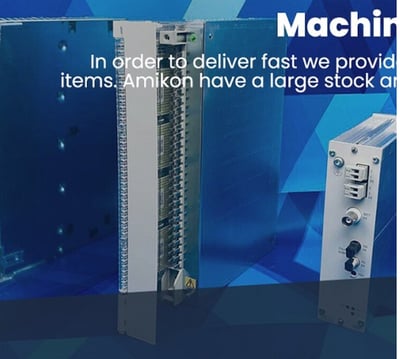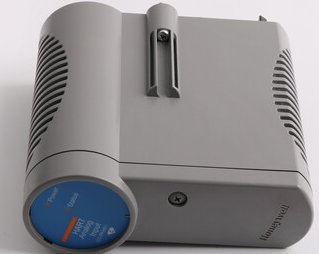DCS system spare parts/CC-PAIH01


DCS system spare parts/CC-PAIH01
E-mail: jack@xianhrauto123.com
PLC control system, Programmable Logic Controller, is an electronic device designed for industrial production that uses a type of programmable memory to store programs, perform logical operations, sequence control, timing, counting and arithmetic operations, and other user oriented instructions. It controls various types of machinery or production processes through digital or analog input/output. It is the core part of industrial control. Since the 1960s, when the United States introduced Programmable Logic Controllers (PLCs) to replace traditional relay control devices, PLCs have developed rapidly and have been widely used around the world. At the same time, the functions of PLC are constantly improving. With the continuous development of computer technology, signal processing technology, control technology, and network technology, as well as the increasing demands of users, PLC has added functions such as analog processing and motion control on the basis of switch processing. Today's PLCs are no longer limited to logic control, but also play a very important role in fields such as motion control and process control. It is a real-time system that is different from personal computers In traditional relay based motor control systems, when the design is changed, almost the entire system needs to be remade, which is not only time-consuming but also laborious; At the same time, due to the disadvantages of poor contact, wear and tear, and large size of relays, they cause problems such as increased cost, low reliability, and difficulty in maintenance In order to improve these shortcomings, DEC in the United States first published the Programmable Controller in 1969
Program controller
At the beginning of its publication, it was called Programmable Logic Controller (PLC), abbreviated as PC, with the aim of replacing relays to perform sequential control of relay logic and other timing or counting functions. Therefore, it is also known as a sequential controller. Its structure is similar to that of a microcomputer, so it can also be called a Microcomputer Programmable Controller (MCPC). It was not until 1976 that the National Electric Machinery Manufacturing Association officially named it Programmable Controller, abbreviated as PC. Due to the widespread use of personal computers and their frequent use in conjunction with programmable controllers, in order to distinguish between the two, programmable controllers are generally referred to as PLCs
There are various types of PLC controllers on the market, which vary depending on the manufacturer and usage location. However, each brand can be classified into large, medium, and small sizes based on the complexity of the unit; General factories and schools usually use small PLC, and the old F-series PLC and domestic A-series PLC are preferred by countrymen And this CAI will mainly introduce the Mitsubishi FX2 PLC controller, hoping that users can have a deeper understanding of PLC and be more proficient in using PLC The basic internal structure of a programmable controller can be represented by the following diagram. Its internal processing unit includes three major parts: CPU, input module, and output module. The CPU of the PLC controller obtains the signals generated by the input components through the input module, and then gradually retrieves the control instructions originally input from the programmer from the memory. After logical calculation by the fine arithmetic unit, the results are driven by the output module to drive the external output components
As a discrete control product, PLC experienced rapid development in the 1980s and 1990s, with an annual growth rate of 20% to 30% worldwide. With the continuous improvement of factory automation and the expansion of the market capacity base of PLC controllers, the growth rate of PLC in industrialized countries has slowed down in recent years. However, the growth of PLC is very rapid in developing countries such as China. Based on relevant information, the sales revenue of PLC in 2004 was around 10 billion yuan, occupying a very important position in the field of automation.
VCP05.1 BSN-RS-NN-PW
BRITGR31-0
WIP11I1E11
216-CT 64MB
SGDV-5R4DE5A
SS20001
DBSC105-24-AAA 25067ED DBSC 105-24-AAA6SE3117-3DC40
S+Z 280-606-010001
A20B- 1007-0960/01A A20B-1007-0960 /01A800-5838-4RB 825-0069-1R C
142. -40/M2/OP7 Art.: 601-1422-S007
A02B-0261-C163/MCR
6SN1118-1NH01-0AAO
Vectron VCB 400-010
6AV6 642- 5BA00-0AEO
E82EV152K2C
1 579A01354CM14V
24-70/8-20
AMK AMKASYN KW10 KW 10 + KW-R03S022.006.0030.0030.1
Moeller Panel A5-220.1
Heidenhain LS 187C 540 mm Id.Nr 526974-05Nordac SK 510E- 401-340-A
Nordac SK 500E -751-340-A
KEB 09.F4.S1D-4003
ARS-310/5
6EW1890-5BA 6FC5114-0AA01-0AAO
6FC5303-0AF50-3EA0
6AV3617-1JC20-0AX1
DR2-A5AC-NY41
GNT6014108R0001
MSK030C- -900-NN-M1-UG0-NSNN
6AV6545-0BC15-2AX0
Siemens 6SC6100-0GA12
Siemens 6GK7343-1CX10-0XE0
Omron ZS-LD80
Siemens 6ES7407-0KR02-0AAO
Hilscher CIF1 00-L .9805004 CIF100-DPM + L0204041Moeller PS416 PS416-BGT-421


Customer Service
Contact Us
© 2024. All rights reserved.
TEL : +86 13359272260
EMAIL : jick@xianhrauto123.com
WEBSITE : https://en.xianhrauto.com
ADDRESS: 12th Floor, Times International, Taiyi City, Beilin District, Xi'an City
Company Profile
We are a DCS system spare parts, industrial automation, transmission control, low-voltage distribution products as the leading products, with advanced equipment, with a group of industrial automation experienced professional and technical personnel.
